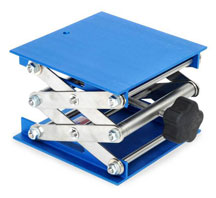 |
 |
| MSDS Topics |
Free Sites | FAQ's | Regulations | Glossary | Software | Suppliers |
| Books | Forum | Poll | Fun stuff | Quiz | Store | |
| MSDS and safety supplies | Search ALL our MSDS info | |||||
 | |||
 |
 |
 |
|
| Title: 06/29/2015 - Definition of complex mixture | |
| Record Type: Interpretation | Standard Number: 1910.1200; 1910.1200(g)(4) |
OSHA requirements are set by statute, standards and regulations. Our interpretation letters explain these requirements and how they apply to particular circumstances, but they cannot create additional employer obligations. This letter constitutes OSHA's interpretation of the requirements discussed. Note that our enforcement guidance may be affected by changes to OSHA rules. Also, from time to time we update our guidance in response to new information. To keep apprised of such developments, you can consult OSHA's website at http://www.osha.gov
June 29, 2015
Mr. Morton E. Wakeland, Jr., Ph.D.
EPCRA 313 Enforcement and TRI Program Coordinator
U.S. Environmental Protection Agency - Region 6
1445 Ross Avenue, Suite 1200
Dallas, Texas 785202-2733
Dear Dr. Wakeland:
Thank you for your letter to the Occupational Safety and Health Administration’s (OSHA) Directorate of Enforcement Programss. Your letter requested the definition of “complex mixture” under the Hazard Communication Standard (HCS), 29 CFR 1910.1200. This letter constitutes OSHA’s interpretation only of the requirements herein, and may not be applicable to any questions not delineated within your original correspondence.Your paraphrased question and our response are provided below.
Background: During a U.S. Environmental Protection Agency Emergency Planning and Community Right-to-Know Act (EPCRA) Section 313 inspection at a covered facility, an inspector came across a vendor’s material safety data sheet (MSDS) that raised some issues regarding the chemical information as it relates or not to being a “complex mixture.”
Question: How does OSHA define complex mixtures as it is used in paragraph 1910.1200(g)(4)?

Response: The HCS does not contain a definition for “complex mixtures.” However, OSHA considers a mixture to be a “complex mixture” if it has a range of complex (i.e., multiple) ingredients that vary due to variations in its composition. Paragraph (g)(4) provides that [w]here complex mixtures have similar hazards and contents (i.e., the chemical ingredients are essentially the same, but the specific composition varies from mixture to mixture), the chemical manufacturer, importer or employer may prepare one safety data sheet to apply to all of these similar mixtures
See 77 Fed. Reg. 17574, 17731 (Mar. 26, 2012).
In the preamble to the HCS 2012, OSHA explained that petroleum streams are an example of a type of complex mixture, and that it would be appropriate to use a concentration range, rather than an exact concentration, for the ingredients that vary stream to stream. Id. OSHA also noted that when a manufacturer has a line of products that are very similar and pose the same hazard, but can be varied slightly in composition to meet the needs of customers (e.g. toner color with varying amounts of pigment), the manufacturer may use concentration ranges for multiple, similar products. Id. Thus, a "generic" SDS may address a group of complex mixtures, such as crude oil, natural gas, or bricks, which have similar hazards and characteristics because their chemical ingredients are essentially the same even though the specific composition varies in each mixture.
Based on the extracted MSDS information provided in your letter, it is difficult to determine whether the mixture is a complex mixture. Generally, Lignonsulfonate would be considered a complex mixture because of having a wide range molecular mass depending on whether it is produced from soft or hard woods.
Therefore, if the manufacturer includes only Barium Carbonate or Barium Chloride in the mixture at one time and these chemicals pose different hazards, then it is not permissible to use a single SDS that lists both chemicals. If, however, only Barium Carbonate or Barium Chloride is in the mixture at one time and these chemicals have similar health hazards, a single SDS would be appropriate.
Thank you for your interest in occupational safety and health. We hope you find this information helpful. OSHA’s requirements are set by statute, standards, and regulations. Our letters of interpretation do not create new or additional requirements but rather explain these requirements and how they apply to particular circumstances. This letter constitutes OSHA’s interpretation of the requirements discussed. From time to time, letters are affected when the Agency updates a standard, a legal decision impacts a standard, or changes in technology affect the interpretation. To assure that you are using the correct information and guidance, please consult OSHA's website http://www.osha.gov.
If you have further questions, please feel free to contact the Office of Health Enforcement at (202) 693-2190.
Sincerely,
Thomas Galassi, Director
Directorate of Enforcement Programss
The official, public domain, OSHA version of this document is available at http://www.osha.gov/pls/oshaweb/owadisp.show_document?p_table=INTERPRETATIONS&p_id=30188&p_text_version=FALSE